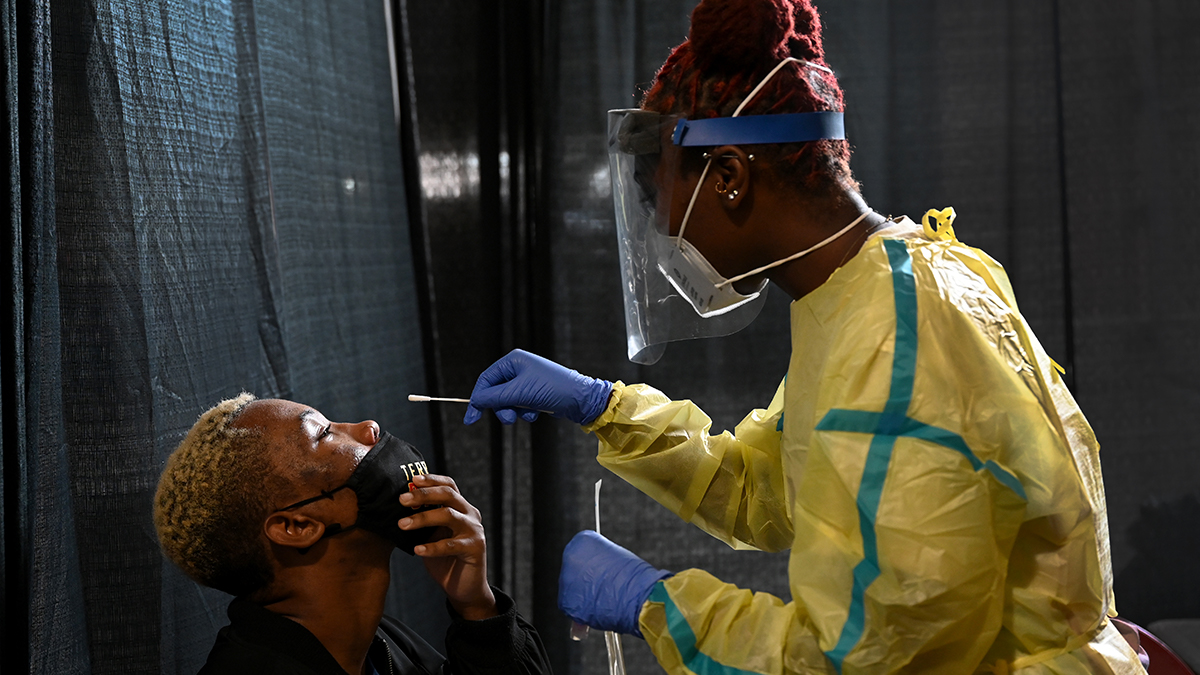A new model from the University of Virginia shows that although coronavirus cases may be declining in the region now, it's important to remain vigilant.
A major resurgence could come in the fall, researchers predict.
"The return to school, including student travel, and the onset of fall weather are likely to cause some increase in new cases," researchers said.
The model predicts about 11,306 new cases could be diagnosed in a single week at the end of September. That would bring Virginia's crisis to a level higher than it was at the peak of new infections being uncovered, in late May.
A new peak could occur sometime in October, reaching between 13,625-17,320 new cases in a week, depending on how well commonwealth residents adhere to social distancing and other mitigation strategies.
That means researchers anticipate that two months from now, near or over 2,000 people will get diagnosed with coronavirus every day in Virginia.
We're making it easier for you to find stories that matter with our new newsletter — The 4Front. Sign up here and get news that is important for you to your inbox.
What the Data Shows
While the resurgence researchers predict for Virginia isn't reflected in the numbers yet, there are some concerning trends in the commonwealth.
The proportion of positive tests coming back is still at 6.4%, higher than D.C. (2.5%) or Maryland (3.3%). Some spots are higher, including Prince William County which is about 2% above the state average.
Seven-day averages of new cases are a quick way to assess where areas stand in their fight against the virus. Health officials want them to decline.
By that measure, right now, D.C., Maryland and Virginia are better off than they were last week. But they are still worse off than they were a month ago, and the numbers are up slightly from Tuesday.
Virginia's most recent low point in average new cases was in the 480s on June 21. Now, the average is 852.
Maryland's most recent low point was around 338 on June 24, compared to 548 now.
D.C. began July with average new cases in the low 30s. Now, that number is 53.
The map below shows the number of coronavirus cases diagnosed per 1,000 residents.
Coronavirus Cases in DC, Maryland and Virginia
COVID-19 cases by population in D.C. and by county in Maryland and Virginia
Source: DC, MD and VA Health Departments
Credit: Anisa Holmes / NBC Washington
Local Coronavirus Headlines
- Virginians on unemployment will get an extra $300 on top of what the state pays out. Read more.
- Special needs students are among the first groups who should get in-person instruction, Fairfax County school officials say. Read more.
- Montgomery County officials said in an update Wednesday that testing will resume at county sites using test kits from the state. Testing was suspended last week after the state health department ordered the county stop using saliva tests from a Rockville lab. Read more.
- The federal government has started sending new COVID-19 testing systems to nursing homes around the country in hopes that the rapid results provided by antigen tests will slow the spread of the virus. Long-term care facilities certainly welcome that assistance, but some have major concerns about those tests. Get the News4 I-Team report.
- Most people recently diagnosed with the coronavirus in D.C. had no known contact with someone who had the virus and did not attend events or travel, new data from the city says. Read more.
- Montgomery County residents who have been hit financially hard by the coronavirus pandemic can apply for short-term rental assistance. The application is open through Aug. 31.
- Metrorail service has increased to the highest levels since the pandemic began – and more stations are opening soon. Read more.
- Virginia Gov. Ralph Northam unveiled a plan for limited new spending on blocking evictions, boosting high-speed internet access and more. Read about the plan.
Reopening Tracker
- Private and parochial schools in Maryland can choose when to reopen after a back-and-forth between county health officials and the governor. Read more.
- Prince George's County is revising its phase two reopening executive order due to an uptick in coronavirus cases, according to the county executive's office.
- Virginia entered phase three reopening on July 1, loosening restrictions on restaurants, stores, gyms and pools. Northam said more restrictions could be implemented if cases continue to grow.
- Prince George's County entered full phase two on June 23, allowing the MGM Casino and gyms to reopen.
- D.C. entered phase two on June 22, allowing indoor dining, gyms, libraries and houses of worship to reopen with restrictions.
- Montgomery County entered phase two on June 19, reopening with restrictions gyms, houses of worship, indoor dining and retail.
- Maryland entered phase two of reopening on June 10, permitting indoor dining, outdoor pools and outside amusements to reopen.
How to Stay Safe
There are ways to lower your risk of catching coronavirus. Here are guidelines from the CDC:
- Wear a snug-fitting mask that covers your nose and mouth.
- Avoid being indoors with people who are not members of your household. The more people you are in contact with, the more likely you are to be exposed to COVID-19. If you are indoors with people you don’t live with, stay at least six feet apart and keep your mask on.
- Wash your hands often, especially after you have been in a public place.
Sophia Barnes, Andrea Swalec and Anisa Holmes contributed to this report



